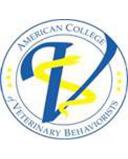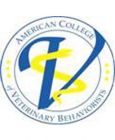Sport and Competition
Canine Sports
Many dogs can enjoy the exercise and socialization from these activities.
Posted October 4, 2016
By: Liz Stelow, DVM, DACVB, Clinical Animal Behavior Service at the UC Davis William R. Pritchard Veterinary Medical Teaching Hospital.
Most people think of dogs as playful creatures, frequently at play with people and other dogs. This is one of the great joys of dog parks. Some dogs will even play with inanimate objects like plush or squeaky toys. Then, there are the super athletes of the canine world: the Frisbee® dogs!
What many people appear unaware of is that there are several just-for-dogs sports beyond catching a well-thrown Frisbee. Not every dog is a good candidate for every one of these sports; but most owners of active dogs can find a good match among them for their special dog.
So, what are these sports?
Agility: Canine agility involves a dog running a course of obstacles against time, much like those used in the equestrian sport of show jumping. In the case of agility, the obstacles can include see-saws, tunnels, ramps, and hurdles. While dogs can compete against their own documented times, they are often racing against the times of their competitors.
Freestyle: In musical freestyle, the dog and owner perform a choreographed and rehearsed routine that is often compared to dancing. In one form, heeling to music, the dog is in a heel position while he and the owner more artistically across the floor. In true freestyle, these constraints are lifted and the dog can perform tricks, like jumping on or over the owner, rolling, spinning, and others. In competition, scoring is done by human judges.
Treibball: In this sport, dogs "herd" inflatable exercise balls into a soccer-type netted goal. This sport is particularly rewarding for herding dogs like Border Collies and Australian Shepherds. This sport is particularly useful for those owners with herding dogs but without access to sheep or cattle.
Lure Coursing: Sighthounds specialize in chasing live prey and this sport is specifically for them. In lure coursing, live prey are mimicked using an artificial lure that is moved quickly through a field using a system of lines and pulleys. The dogs then give chase and are evaluated on a number of factors, including speed and agility.
Dock Diving (also called Dock Jumping): The simple explanation of this sport is that dogs compete for the height and distance they achieve when jumping off of a dock into the water. This sport, as a competitive challenge, was born at the end of the last century and is enjoyed by many water-loving breeds.
Nose Work: For dogs with "super sniffers," nose work is just the sport. During training, dogs learn to search for specific odors. In competition, they are timed on how long it takes them to find the source of the scent they are assigned. Training starts from the simple (scents in shoe boxes) to the complex (scents that are hidden or placed at a distance). Nose Work is an "equal opportunity" sport, in that any dog can participate.
Tracking: This sport is similar to nose work, in that a dog is asked to find the source of a scent. In this case, the scent is left along the ground by someone or something that the dog is then asked to locate. All breeds qualify for tracking competition and each dog receives a Pass or Fail, based on his success in finding the source of the scent.
Herding Trials: In this sport, herding dogs are asked to move sheep from one location to another, often around obstacles, at the direction of their handlers. Although many herding breeds take naturally to the sport, training can be extensive. Competitions are judged based on a dog's response to certain handler cues and his control of the sheep.
While this is by no means an exhaustive list of canine sports available to the dedicated dog owner, it provides a variety of options as a starting point. Owners should keep in mind that, the more rigorous the sport, the greater the possibility for injury. Also, dogs competing near other dogs and people should be behaviorally sound, with no aggression or untreated anxiety/fears. For these reasons, please consult with your veterinarian before starting a new sport with your dog.
By: Liz Stelow, DVM, DACVB, Clinical Animal Behavior Service at the UC Davis William R. Pritchard Veterinary Medical Teaching Hospital.




